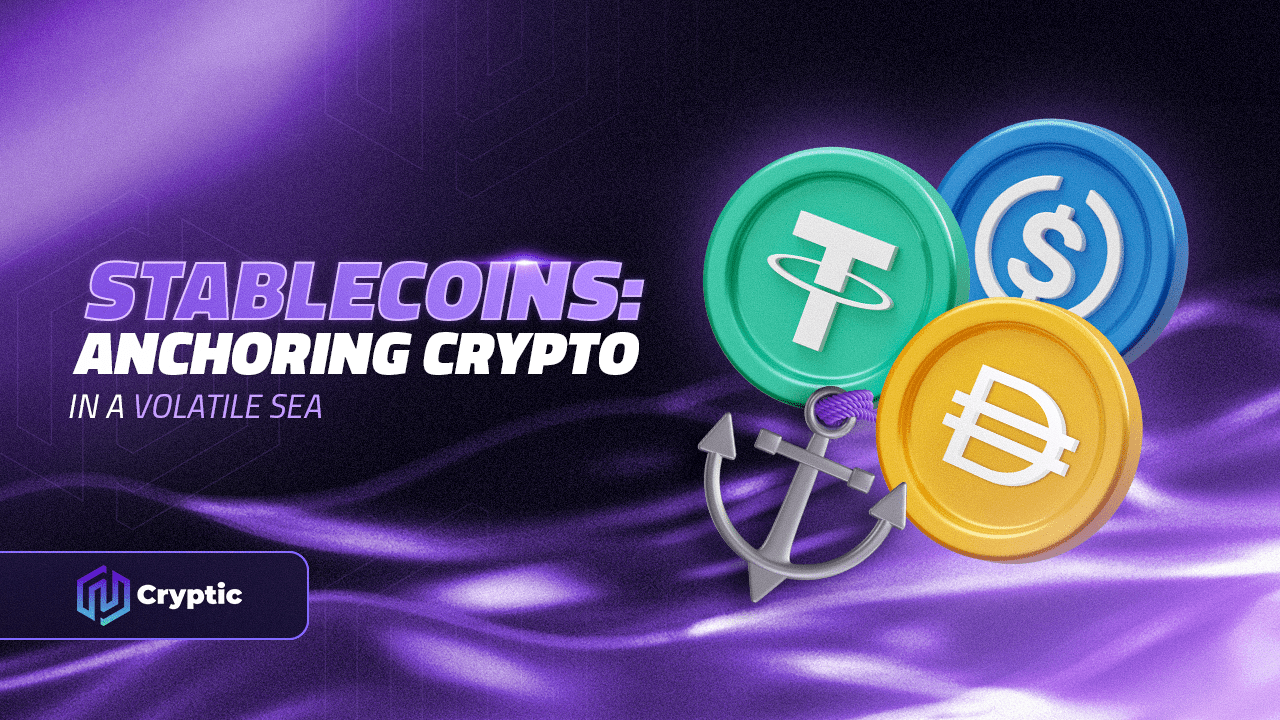
The world of cryptocurrency is brimming with innovation and disruption, but its inherent volatility can be a barrier to mainstream adoption. Enter stablecoins – digital assets designed to offer price stability, tethered to a real-world asset like fiat currency, precious metals, or even other cryptocurrencies. This comprehensive guide dives into the fascinating realm of stablecoins, exploring their types, functionalities, advantages, and potential drawbacks.
Unveiling the Anchor: Understanding Stablecoin Pegs
The defining characteristic of a stablecoin is its price peg. This peg refers to the external reference asset that the stablecoin’s value is tied to. Here’s a breakdown of the most common types of stablecoin pegs:
-
Fiat-Collateralized Stablecoins: These are the most prevalent type, with their value pegged to a fiat currency like the US dollar (USD) or the Euro (EUR). For each unit of the stablecoin in circulation, the issuing entity holds an equivalent amount of the reserve asset in a secure custodial account. Examples include Tether (USDT), USD Coin (USDC), and Binance USD (BUSD) but Binance’s decision to terminate support for BUSD was outlined in its August 31, 2023 statement
-
Commodity-Collateralized Stablecoins: These stablecoins derive their stability from precious metals like gold (XAU) or oil (OIL). Each unit of the stablecoin is backed by a specific amount of the underlying commodity held in reserve. Examples include Tether Gold (XAUT) and Paxos Gold (PAXG).
-
Crypto-Collateralized Stablecoins: As the name suggests, these stablecoins are pegged to another cryptocurrency, often a more established one like Bitcoin (BTC) or Ethereum (ETH). The value of the stablecoin is maintained through an overcollateralization mechanism, where the collateral value exceeds the issued stablecoin amount to absorb market fluctuations. Examples include Dai (DAI) and TrueUSD (TUSD).
The choice of peg has a significant impact on the stability and use case of a stablecoin. Fiat-collateralized stablecoins offer stability but raise concerns about centralization if trusted custodians hold the reserves. Commodity-backed stablecoins introduce exposure to commodity price fluctuations, while crypto-collateralized stablecoins inherit some volatility from the underlying cryptocurrency.
Maintaining the Peg: Unveiling the Mechanisms
Stablecoins employ various mechanisms to maintain their peg to the reference asset. Here’s a closer look at some common approaches:
-
Centralized Reserves: As mentioned earlier, fiat-collateralized stablecoins rely on centralized entities holding reserve assets to back their issued stablecoins. Regular audits are crucial to ensure transparency and maintain trust in the peg.
-
Seigniorage Shares: Certain stablecoins utilize a mechanism called seigniorage shares. When the stablecoin price exceeds the peg, new tokens are minted and sold, driving the price down. Conversely, when the price falls below the peg, tokens are bought back and burned, reducing supply and pushing the price up.
-
Algorithmic Adjustments: Some stablecoins leverage algorithms to manage the supply of the stablecoin in circulation. These algorithms can dynamically adjust supply based on market conditions to maintain the peg. However, this approach can be complex and susceptible to unforeseen market events.
The effectiveness of each mechanism depends on the specific stablecoin design and the overall market conditions. A robust combination of these approaches can foster greater stability and inspire user confidence.
Riding the Stable Wave: Advantages of Stablecoins
Stablecoins offer several advantages that make them a valuable addition to the cryptocurrency ecosystem:
-
Reduced Volatility: Unlike traditional cryptocurrencies, stablecoins provide a hedge against price fluctuations. This makes them suitable for everyday transactions and storing value without the fear of sudden price swings.
-
Faster Transactions: Compared to traditional cryptocurrencies, some stablecoins offer faster and cheaper transactions due to their efficient consensus mechanisms. This opens doors for real-world applications like cross-border payments.
-
Integration with DeFi: Stablecoins play a pivotal role in the burgeoning Decentralized Finance (DeFi) ecosystem. They act as a medium of exchange for DeFi applications like lending, borrowing, and yield farming.
-
Improved Accessibility: Stablecoins can bridge the gap between traditional finance and the crypto world. They offer a familiar fiat-like experience within the crypto ecosystem, potentially attracting new users hesitant about volatile cryptocurrencies.
However, stablecoins are not without their drawbacks. Concerns regarding centralization, potential regulatory hurdles, and the inherent risks associated with the underlying peg mechanism require careful consideration.
Navigating the Uncharted Waters: Potential Drawbacks of Stablecoins
While promising, stablecoins present some potential challenges that need to be addressed:
-
Centralization Risk: Fiat-collateralized stablecoins, especially those relying on a single custodian for reserves, raise concerns about centralization. A loss of trust in the custodian or regulatory intervention could disrupt the peg.
-
Regulatory Uncertainty: The regulatory landscape surrounding stablecoins is still evolving. Unclear regulations can hinder innovation and adoption.

Leave a Reply